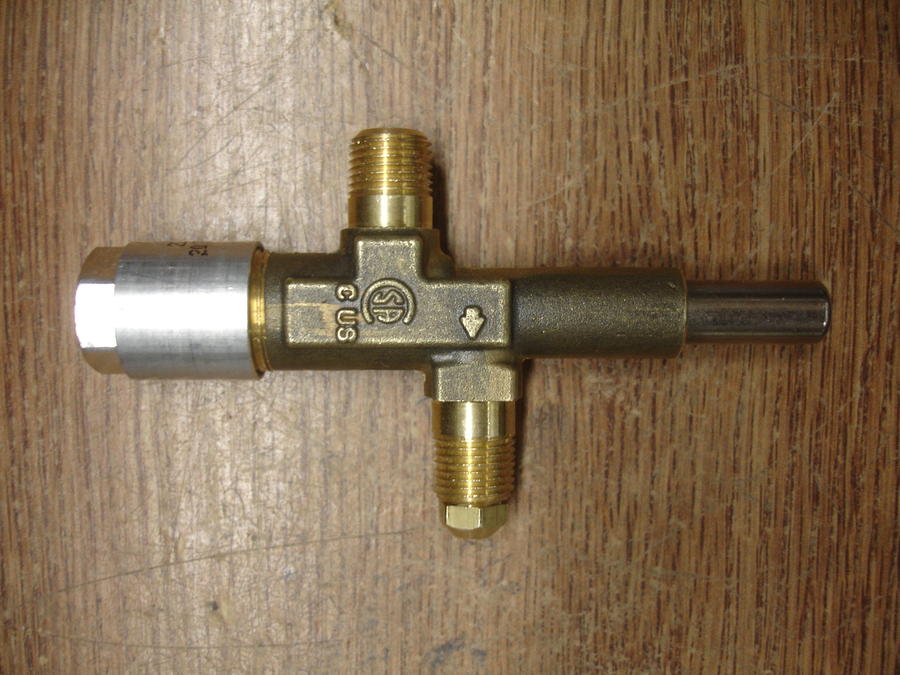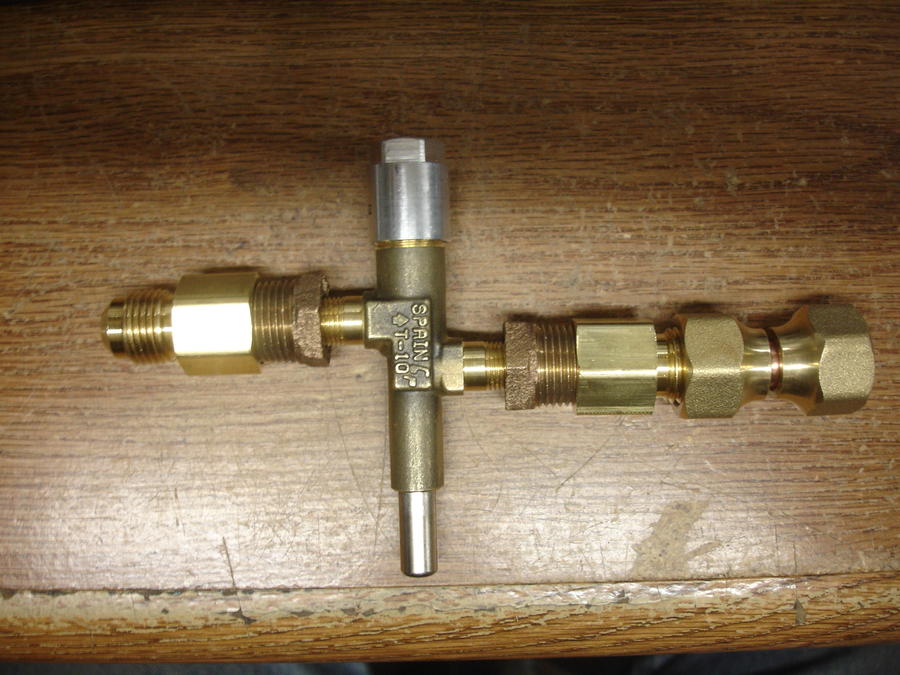fuzzy0026
Fire Starter
- Feb 21, 2016
- 43
- 12
Glen,
For anyone else who reads this later, you're asking about the safety valve, not the thermocouple. The thermocouple is the part that connects to the safety valve, and sits in the burner to detect the flame.
As best I recall, looking at the picture, here's the parts I used, from the supply hose to the smoker:
1) 3/8" Flare male x 3/8" NPT female
2) 3/8" NPT male x 1/4" NPT female
3) Safety Valve
4) 3/8" NPT male x 1/4" NPT female (Same as part 2)
5) 3/8" Flare male x 3/8" NPT female (Same as part 1)
6) 3/8" Flare female x 3/8" Flare female
You basically need to go from 3/8" Flare on the hose to 1/4" NPT on the safety valve, and back to 3/8" Flare on the smoker. In addition, I was worried that after tightening all the parts, the safety valve button might not be in a desirable position, so I added part 6 which is a rotating 3/8 Flare coupling. I was able to tighten everything starting at the hose end and get it locked down, and then screw the last flare fitting onto the smoker, keeping the push button pointing out while I tightened it.
In addition, I couldn't find a single part (at my Home Depot) to go from 3/8 Flare male to 1/4" NPT female, so I had to use 2 parts. If you can find a single part, 1 and 2 would become a single part, and 4 and 5 would become a single part.
Truthfully, my fittings may not be the best or only way. I went to HD with my safety valve, and knowing I needed to have a 3/8" flare male on one end of the final contraption, and a 3/8" flare female on the other end, with the ability to rotate it into alignment, and I played around with fittings until I found a combination that worked. If I had landed at a store with different stocked fittings, I might have ended up with a different approach.
Glen
I went to Menards last night with the safety valve in hand. I looked for the parts you listed, and of course I couldn't find them. I then asked a nice young girl to help me. I showed her your picture and the list you sent and she couldn't find them either. Looking at the safety valve, it is flare on both sides, but you list 1/4 NPT on both ends. Could my valve be different? It looks the same.
We tried the 1/4" and the 1/8" and the threads aren't the same. It seems like the threads on the safety valve are finer than both the 1/4" and 1/8" couplers. Was yours not a flare male end on your safety valve? I am getting to the point of just sh*t canning the whole safety valve thing







